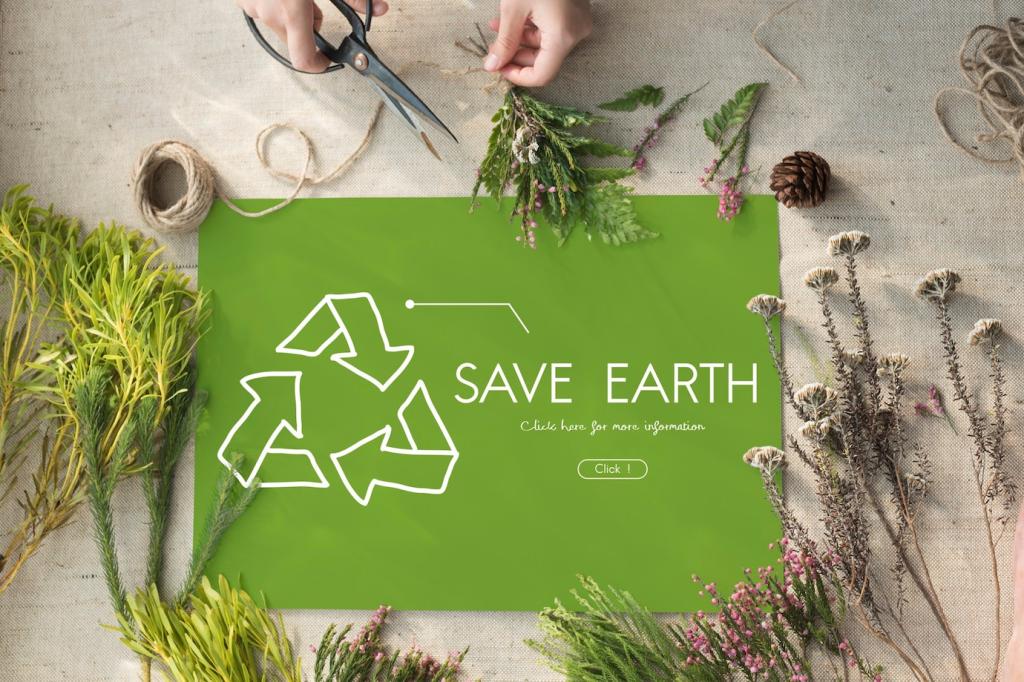Shine That Returns to Nature: Biodegradable Polishes and Waxes
Today’s theme: Biodegradable Polishes and Waxes. Explore plant-based shine that protects your surfaces—and the planet. Join the conversation, share your tips and photos, and subscribe for hands-on guides and real-world experiments dedicated to eco-friendly polishing.
What Makes Biodegradable Polishes and Waxes Different
01
Biodegradable polishes and waxes are formulated so microorganisms can break them down into natural components under typical environmental conditions. Look for credible test references, like OECD 301, and clear disclosure of biobased content rather than vague green claims or unspecified “natural” labels.
02
Common building blocks include carnauba, beeswax, candelilla, and soy wax, paired with plant oils such as linseed or tung. Safer carriers may use water, citrus terpenes, or bio-solvents, minimizing petroleum inputs without sacrificing workable viscosity, spreadability, or buffable gloss.
03
Cleaner chemistry often brings practical perks: lower odors, friendlier indoor air, easier cleanup, and fewer disposal headaches. A balanced formula can still deliver a hard, protective film while reducing reliance on high-VOC solvents and non-renewable additives that linger in homes and waterways.
Application Techniques for a Durable, Natural Finish
Surface Preparation That Sets the Tone
Clean with a mild, residue-free soap, then ensure dust is removed with a microfiber cloth. On wood, finish sanding with a fine grit to open the grain evenly. A perfectly clean, dry surface helps plant-based waxes anchor without streaks or blotchy absorption.
Thin Coats, Patient Cures
Apply very thin layers using a soft pad or lint-free cloth, working in small circles and following grain where relevant. Allow ample cure time between coats; many biodegradable blends harden more slowly, rewarding patience with greater clarity, depth, and long-term resilience.
Buffing for Gloss and Protection
After hazing, buff lightly with a clean cloth, adding gentle pressure only as needed to bring up the shine. Two to three passes often create a smooth, breathable finish that resists fingerprints while maintaining a natural, hand-rubbed character across varied materials.
Performance: Myths, Tradeoffs, and Real Results
Scratch and Water Resistance
Hard carnauba-rich blends resist micro-scratches surprisingly well when layered thinly and fully cured. Water beading improves after the second coat. For heavy wear zones, schedule light maintenance touches rather than waiting for a total finish failure that requires aggressive rework.
Heat, UV, and Outdoor Exposure
UV can dull any waxed surface over time. Pair biodegradable waxes with shade, breathable covers, or UV-blocking top coats where feasible. For outdoor wood or bikes, regular quick refreshes keep the hydrophobic barrier active without building excessive, smudgy film thickness.
A Maintenance Plan That Saves Time
Rather than monumental quarterly overhauls, many users prefer brief monthly wipe-ons and buff-offs. This rhythm maintains gloss, avoids heavy product use, and keeps surfaces looking consistent. Track your intervals and share what cadence works for kitchens, cars, or workbenches.
Sourcing and Sustainability from Field to Finish
Carnauba from well-managed Brazilian groves and beeswax from healthy apiaries support biodiversity when sourced responsibly. Linseed and tung oils can come from rotations that build soil. Ask brands about traceability, certifications, and fair labor throughout the harvest and processing stages.

Stories from the Workshop and the Wild
A Furniture Restorer’s Quiet Breakthrough
A restorer switched from a harsh solvent wax to a carnauba-beeswax blend and noticed clients no longer commented on lingering smells. The piece’s walnut grain gained depth after a second thin coat, and maintenance touch-ups became a gentle, five-minute ritual.
On the Coast: Boards and Boats
A weekend board builder tested a plant-based wax on deck pads and rails. While it required slightly more frequent refreshes, grip and sheen stayed consistent. Knowing runoff posed less risk to tide pools made the small maintenance tradeoff feel worthwhile.
Car Enthusiast, Cleaner Garage Air
A hobbyist detailer tried a low-VOC polish before a community meet. The garage kept its fresh smell, and buffing dust was manageable. Neighbors asked about the finish, which held a crisp gloss through a week of sun and two surprise showers.
Your Starter Kit for Biodegradable Polishes and Waxes
Essential Tools and Materials
Gather lint-free cloths, soft applicator pads, a gentle cleaner, and your chosen biodegradable polish or wax. A separate buffing cloth prevents cross-contamination. Keep a timer, note drying conditions, and document results so you can refine coats and intervals next time.

